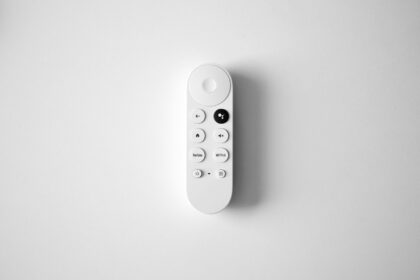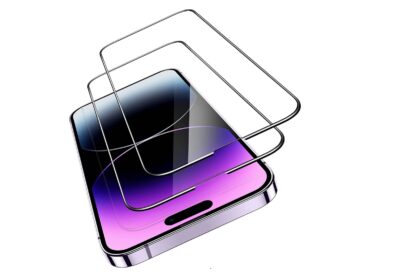Background app refresh lets your iPhone or Android device fetch new content even when an app is closed. This feature keeps feeds, messages, and other updates ready so apps open with fresh data.
That convenience speeds access but can use battery and mobile data. For example, your email checks for new messages and social apps update feeds quietly in the background.
In this article, we’ll explain how the setting works on both iOS and Android, how it differs from notifications, and why developers rely on it to deliver instant updates. You’ll also get practical tips to balance convenience with power and data use.
Key takeaways: background activity offers faster access, may drain battery or data, and you can control it per app on smartphones.
Understanding Background App Refresh and Background Data Usage
Modern mobile systems allow apps to run quietly in the background to keep content current and ready when you open them.
iPhone and iPad behavior
On iOS, background app refresh lets each app check servers and download small updates while it’s not visible. This means email and news appear current without waiting for a manual pull.
How Android handles background data
Android uses background data to permit apps running background tasks to fetch updates. System tools and data saver modes help limit that activity per app.
Pros and cons
The upside is speed: instant access to messages, social feeds, and headlines. The downside is resource use — every silent update taps battery and uses mobile data, which can add up across many apps.
- Control: iOS centralizes this in Settings > General, while Android offers app-level controls.
- Not every app needs constant refresh; some even ‘re fine updating only when opened.
What Does Background App Refresh Mean for Battery Life and Data
Frequent silent updates can chip away at a phone’s power and sneak past data limits without obvious signs. This section shows how short background checks add up and how to spot heavy users.
How frequent background updates drain battery
Each background fetch wakes radios and the processor. That brief work uses energy, and many small wake‑ups shorten battery life.
Apps that sync constantly—like mail and messaging—often cause the biggest drain.
Why small data usage per app can add up on your data plan
One tiny sync may use little data, but dozens of apps performing occasional checks can exhaust a capped plan.
- Brief network access from apps running repeatedly increases mobile data use.
- On a limited plan, background transfers are easy to miss until you hit a limit.
- Review usage screens to find which services use the most battery life data and mobile data.
Tip: Allow background app refresh only for services that matter, and turn off others to extend life on a single charge and protect your plan.
How to Manage Background App Refresh on iPhone and iPad
You can limit unseen activity on your iPad or iPhone with just a few taps in Settings. These controls help you balance fresh content with battery and mobile data savings.
Turn Background App Refresh off entirely in Settings
Open Settings > General > Background App Refresh. To stop all silent updates, tap Off. This will halt background app refresh for every app at once.
Allow refresh only on Wi‑Fi or Wi‑Fi & Cellular Data
From the same screen choose Wi‑Fi to limit activity to wireless networks. Pick Wi‑Fi & Cellular Data if you want app refresh on any connection. This small change saves mobile data without losing convenience on Wi‑Fi.
Enable or disable refresh per app to fit your usage
Scroll the list on that screen and toggle individual apps on or off. Prioritize email, messaging, and navigation services and disable seldom‑used apps to reduce background load.
- Go to Settings > General > Background App Refresh to view options.
- Tap Background App Refresh and choose Off to stop all activity quickly.
- Use the on‑screen list to toggle specific apps and audit settings regularly.
How to Control Background Data on Android Phones
Controlling unseen network use on Android starts with a few simple settings you can change today.
Samsung Galaxy: Restrict per‑app data
Open Settings and choose Connections > Data usage to see which apps use the most data.
Tap Mobile data usage, pick an app from the list or chart, then turn off Allow background data usage. That stops the selected app from using mobile data when it is not open.
Google Pixel: Use a system Data Saver
On Pixel devices go to Settings > Network & internet > Data Saver and toggle it on. This limits apps running background tasks across the device.
You can allow exceptions for apps that need real‑time access. Combine this with per‑app controls to tune behavior for each device and daily routine.
- Check data‑hungry social or video apps first.
- Repeat per‑app changes for any other apps you want to limit.
- Review usage periodically to keep mobile data in budget.
| Device | Where to change | Best use |
|---|---|---|
| Samsung Galaxy | Settings > Connections > Data usage > Mobile data usage | Turn off Allow background data usage per app |
| Google Pixel | Settings > Network & internet > Data Saver | Enable system Data Saver and allow exceptions |
| Tip | Per‑app + system controls | Combine both to limit running background tasks and save battery |
When to Keep Background App Refresh On or Off
Deciding when to let apps run unseen comes down to balancing timely updates against power and mobile limits.
Apps to allow
Enable refresh for tools that deliver time‑sensitive alerts. Let email, messaging, and calendar services update so you don’t miss important messages or appointments.
Navigation and ride‑share apps also benefit from limited background checks. Routes, ETAs, and driver status load faster when you open the app.
- Keep email and messaging enabled for instant communication.
- Allow navigation and booking apps a small amount of background access.
- Enable banking or security apps that provide urgent alerts.
Apps to restrict
Limit social media and entertainment services that fetch heavy content you rarely view. These apps often run quietly and drain battery and data without giving daily value.
If you aren’t actively using a given service, disable its background activity and let it update only on open. That change improves battery life and helps protect your data plan.
- Turn off refresh for photo feeds, video platforms, and news sources you check infrequently.
- Monitor which apps use the most data and adjust settings after a few days.
- Prioritize the few services that prevent friction, and disable others to extend device life.
Conclusion
, Tune your phone so vital services stay current and everything else waits until you open it.
Both background app refresh on iOS and Android background data keep apps ready with fresh content. That feature helps email and alerts arrive fast but can tax battery and use mobile data.
The smart approach is to allow refresh for essentials and turn background functions off for less useful apps. Use iOS Settings screens, Android Data Saver, and per‑app controls to build a short list of must‑have services.
Check settings after updates and watch your usage for a week. Small tweaks protect battery, keep you within your plan, and let smartphones give timely info without waste.
FAQ
What does background app refresh mean on an iPhone or iPad?
This feature lets apps fetch new content while not on screen. When enabled, Mail, News, and other apps update in the background so they show fresh information when you open them. You can choose to allow refresh on Wi‑Fi only, on Wi‑Fi & Cellular, or turn it off entirely.
How does Android handle apps running in the background?
Android limits background activity through battery and data controls. Settings like Data Saver, app standby, and background data toggles stop or restrict apps from using mobile data or running tasks when you aren’t actively using them.
Why do background updates make email and news load faster?
Apps that refresh in the background download new messages, headlines, and feed items ahead of time. That preloading reduces wait time when you open the app and keeps push notifications timely.
How do background tasks affect battery life?
Frequent background activity keeps the processor, radios, and sensors active more often, increasing power draw. Even small, repeated updates across several apps can lower battery life noticeably over a day.
Can small amounts of background data add up on my mobile plan?
Yes. Each app’s background transfers may be tiny, but multiple apps updating frequently can consume significant data over time, potentially affecting limited cellular plans.
How do I turn background app refresh off completely on an iPhone or iPad?
Go to Settings > General > Background App Refresh and select Off. That stops all supported apps from updating in the background until you turn the setting back on.
Is it possible to limit refresh to Wi‑Fi only on Apple devices?
Yes. In Settings > General > Background App Refresh, choose Wi‑Fi. Apps will refresh only when connected to a Wi‑Fi network, preserving cellular data for when you need it.
How do I enable or disable refresh for specific iOS apps?
Under Settings > General > Background App Refresh, scroll to the app list and toggle each app on or off based on your needs—keep email and navigation active, restrict social apps you rarely open.
How can I restrict background data on a Samsung Galaxy?
Open Settings > Connections > Data usage, then select Mobile data usage or Background data. From there you can restrict apps or toggle background data for individual applications to stop them from using mobile data in the background.
What about Google Pixel phones—how do I limit background activity?
Use Settings > Network & internet > Data Saver to block many apps from using background data. You can also go into Apps & notifications to restrict specific apps or use Adaptive Battery to limit battery‑heavy background tasks.
Which apps should I allow to refresh in the background?
Allow critical apps such as email clients, messaging services, navigation (like Google Maps), and health or security apps that need timely updates. These provide useful, time‑sensitive information when active.
Which apps are safe to restrict from background refresh?
Social media, streaming, and many content apps can be restricted if you don’t open them often. Limiting these apps reduces data use and preserves battery without hurting essential functionality.
























